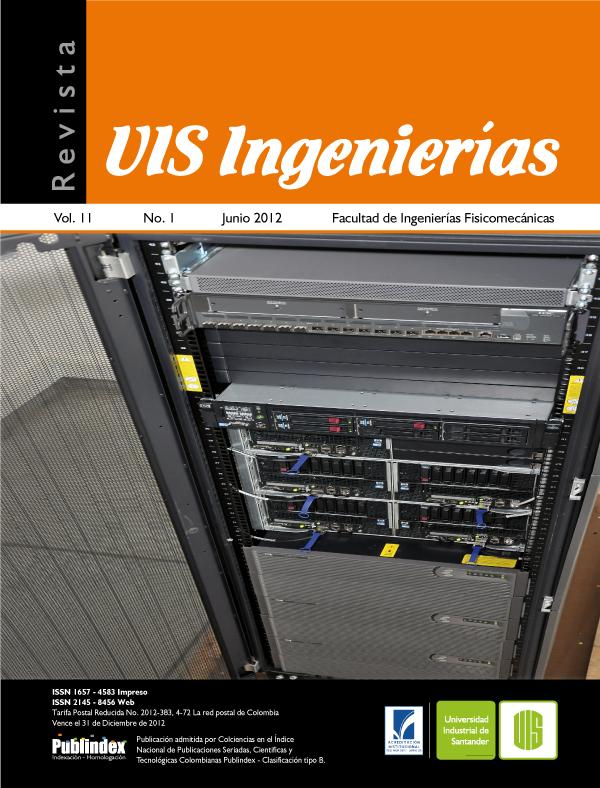Web search model based on user context information and collaborative filtering techniques
Published 2012-06-15
Keywords
- Information retrieval,
- user’s context,
- collaborative filtering,
- query expansion,
- Web search
How to Cite
Abstract
Despite the continuous development modern Web browsers have had, they have not fulfilled user needs, and the retrieved documents relevance is one of the main issues affecting the search quality. The proposed web search meta model engine integrates Web search collaborative filtering (based on items) to Massimo Melucci’s proposal that is based on projectors on plans that came in the user context information. The obtained model was implemented in a meta search site that retrieves documents from traditional search engines like Google and Bing. It presents the results to the user through a list of documents sorted by relevance based on information from the user’s context and the collaborative community feedback. The proposed model constitutes a contribution to the field of information retrieval, since it shows promising results in both closed collections and open collections tests.
Downloads
References
- R. Baeza-Yates and B. Ribeiro-Neto, Modern information retrieval. Addison-Wesley Longman Publishing Co., Inc., 1999, p. 513.
- C. Manning, P. Raghavan, and H. Schütze, “An Introduction to Information Retrieval.” Cambridge University Press, Cambridge, England, 2007.
- C. J. V. Rijsbergen, Information Retrieval. Butterworth-Heinemann, 1979, p.208.
- M. Melucci, “Exploring a mechanics for contextaware information retrieval,” In Proceedings of the AAAI Spring Symposium on Quantum Interaction. AAAI Press, 2007.
- M. Melucci, “A basis for information retrieval in context,” ACM Transactions on Information Systems (TOIS), vol. 26, no. 3, pp. 1–41, 2008.
- J. Nielsen, “When search engines become answer engines,” Jakob Nielsen’s Alertbox, pp. 1–5, 2004.
- K. O’hara and N. Shabdolt, “Knowledge Technologies and the semantic web,” 2004. [Online]. Available: http://eprints.ecs.soton. ac.uk/12469/.
- D. Sullivan, “Nielsen NetRatings search engine ratings,” Search Engine Watch, 2006.
- R. Baeza-Yates, C. Castillo, and B. Keith, “Web Searching,” in Encyclopedia of Language & Linguistics, Oxford: Elsevier, 2006, pp. 527–538.
- M. Melucci, “Context modeling and discovery using vector space bases,” In Proceedings of the AAAI Spring Symposium on Quantum Interaction. AAAI Press, pp. 808–815, 2005.
- S. Liaw and H. Huang, “Information retrieval from the World Wide Web: a user-focused approach based on individual experience with search engines,” Computers in human behavior, vol. 22, no. 3, pp. 501–517, 2006.
- Y. Liu and C. Li, “A query expansion algorithm based on phrases semantic similarity,” Information Processing (ISIP), …, 2008.
- J. Rocchio, “Relevance feedback in information retrieval,” Englewood Cliffs, NJ: Prentice Hall., pp. 313–323, 1971.
- Y. Liu, C. Li, P. Zhang, and Z. Xiong, “A query expansion algorithm based on phrases semantic similarity,” Proceedings of the 2008 International Symposiums on Information Processing, 2008.
- S. Robertson and K. Jones, “Relevance weighting of search terms,” in Document retrieval systems, Taylor Graham Publishing, 1988, pp. 143–160.
- E. Garcia, “RSJ-PM Tutorial: A Tutorial on the Robertson-Sparck Jones Probabilistic Model for Information Retrieval,” 2009.
- E. N. Efthimiadis, “Query Expansion,” In: Martha E. Williams (ed.), Annual Review of Information Systems and Technology (ARIST), vol. 31, pp. 121–187.
- I. G. Kalmanovich and O. Kurland, “Cluster-based query expansion,” Proceedings of the 32nd international ACM SIGIR conference on Research and development in information retrieval, pp. 646–647, 2009.
- A. Abdelali, J. Cowie, and H. S. Soliman, “Improving query precision using semantic expansion,” Inf. Process. Manage., vol. 43, no. 3, pp. 705–716, 2007.
- Claudio Biancalana and Alessandro Micarelli, “Social tagging in query expansion: A new way for personalized web search,” Proceedings of the 2009 International Conference on Computational Science and Engineering - Volume 04, 2009.
- M. Bertier and R. Guerraoui, “Toward personalized query expansion,” Proceedings of the Second ACM EuroSys Workshop on Social Network Systems, 2009.
- Z. D. and W. Liqing, “Study on Key Techniques of Query Expansion based on Ontology and Its Application,” in Computational Intelligence and Software Engineering, 2009. CiSE 2009. International Conference on, 2009.
- T. Nguyen and T. Phan, “An ontology-based approach of query expansion,” Proceedings of the 9th International …, 2007.
- N. A. Segura, “An empirical analysis of ontologybased query expansion for learning resource searches using MERLOT and the Gene ontology,” Knowledge-Based Systems, vol. 24, no. 1, pp. 119– 133, Feb. 2011.
- L. Han and G. Chen, “HQE: A hybrid method for query expansion,” Expert Systems with Applications, vol. 36, pp. 7985–7991, 2009.
- M. Rahman, “A query expansion framework in image retrieval domain based on local and global analysis,” Information Processing & Management, vol. 47, no. 5, pp. 676–691, 2011.
- L. Jong-Seok and O. Sigurdur, “Two-way cooperative prediction for collaborative filtering recommendations,” Expert Systems with Applications, vol. 36, no. 3, pp. 5353–5361, 2009.
- Amazon, “Sitio web de Amazon.” [Online]. Available: http://www.amazon.com/.
- G. Linden, “Amazon. com recommendations: Item-to-item collaborative filtering,” Internet Computing, IEEE, vol. 7, no. 1, pp. 76–80, 2003.
- B. Sarwar and G. Karypis, “Item-based collaborative filtering recommendation algorithms,” Proceedings of the 10th international conference on World Wide Web, 2001.
- B. Marlin, “Collaborative filtering: A machine learning perspective,” University of Toronto, 2004.
- V. Schickel-Zuber, “Ontology filtering,” ÉCOLE POLYTECHNIQUE FÉDÉRALE DE LAUSANNE, Suisse, 2007.
- J. A. Konstan, J. Riedl, A. Borchers, and J. L. Herlocker, “Recommender systems: A grouplens perspective,” in Recommender Systems: Papers from the 1998 Workshop (AAAI Technical Report WS-00-04), 1998, pp. 60–64.
- P. Heymann, G. Koutrika, and H. GarciaMolina, “Can social bookmarking improve web search?,” Proceedings of the international conference on Web search and web data mining, 2008.
- C. Cobos, E. Estevez, M. Mendoza, L. Gomez, and E. León, “Algoritmos de expansión de consulta basados en una nueva función discreta de relevancia,” Revista UIS Ingenierías, vol. 10, no. 1, pp. 9–22, 2012.

